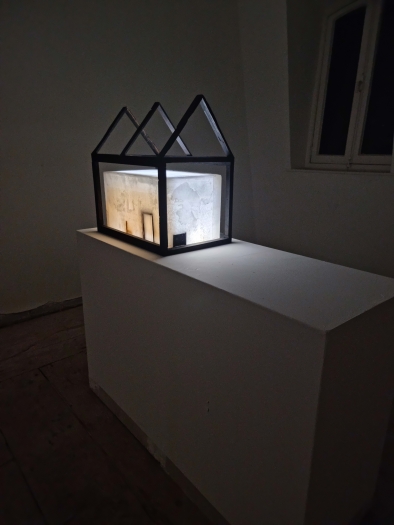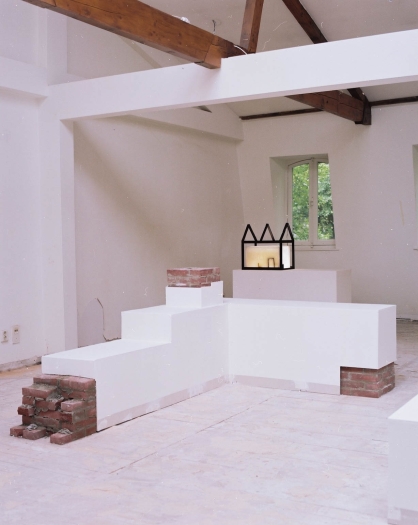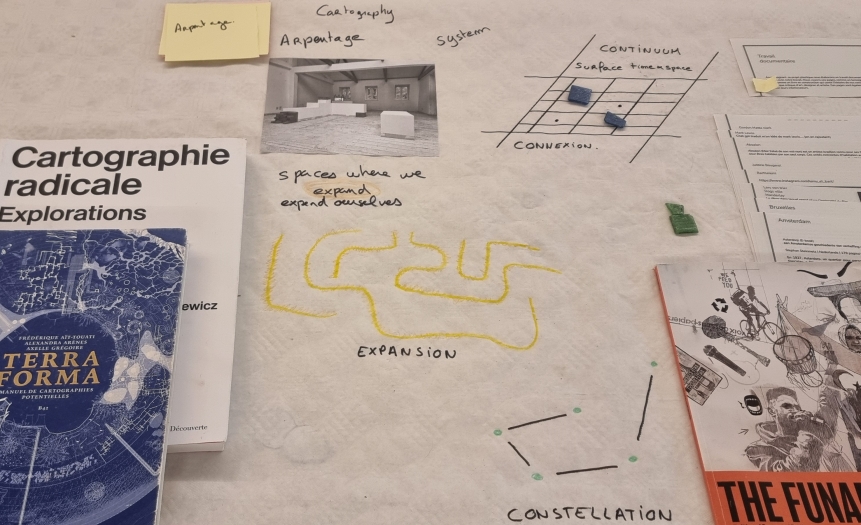Avec l'aide de la Fédération Wallonie-Bruxelles,
Service Général de la Création Artistique
Arthur Jules et Léonor Gomez
"S'il y a une boîte rouge, il pourrait y avoir un fil rouge à l'intérieur, comme une carte allant d'un point à un autre. Nous pourrions tout aussi bien l'appeler Eigen Haard" ["son foyer" ou "sa propre cheminée"].
Des échelles sculpturales différentes, miroirs d'un environnement qui s'étend au-delà des murs de L'Escaut.
Cette installation que nous voulons réaliser, nous la pensons comme une carte spéculative, constituée de sculptures fusionnant des matériaux collectés dans le quartier, et dont les formes sont inspirées d’éléments architecturaux et du mobilier urbain environnants.
En se questionnant sur ce qu’est l’espace de l’Escaut, et plus largement son quartier, son histoire passée, nous tentons d’entrer en résonance avec cet environnement, de rendre compte des perspectives changeantes qui nous parcourent lorsque l’on explore un bâtiment"
"Als er een rode doos is, zou er een rode draad in kunnen zitten, als een kaart die van het ene punt naar het andere gaat. We kunnen het net zo goed Eigen Haard noemen.
Verschillende sculpturale schalen, spiegels van een omgeving die verder reikt dan de muren van de Schelde.
We zien de installatie die we willen maken als een speculatieve kaart, die bestaat uit sculpturen die materialen die in de wijk verzameld zijn, samenvoegen en waarvan de vormen geïnspireerd zijn op de omliggende architecturale elementen en het straatmeubilair.
Door ons af te vragen wat de Schelderuimte is, en meer in het algemeen wat de wijk is en haar geschiedenis, proberen we te resoneren met deze omgeving en de veranderende perspectieven vast te leggen die door ons heen gaan wanneer we een gebouw verkennen”.
"If there's a red box, there could be a red thread inside, like a map going from one point to another. We might as well call it Eigen Haard‘ [’its own fireplace’ or “its own chimney”].
Different sculptural scales, mirrors of an environment that extends beyond the walls of the Scheldt.
We see the installation we want to create as a speculative map, made up of sculptures fusing materials collected in the district, and whose forms are inspired by the surrounding architectural elements and street furniture.
By questioning what the Scheldt space is, and more broadly what the district is, and its past history, we are trying to resonate with this environment, to capture the changing perspectives that run through us when we explore a building".


